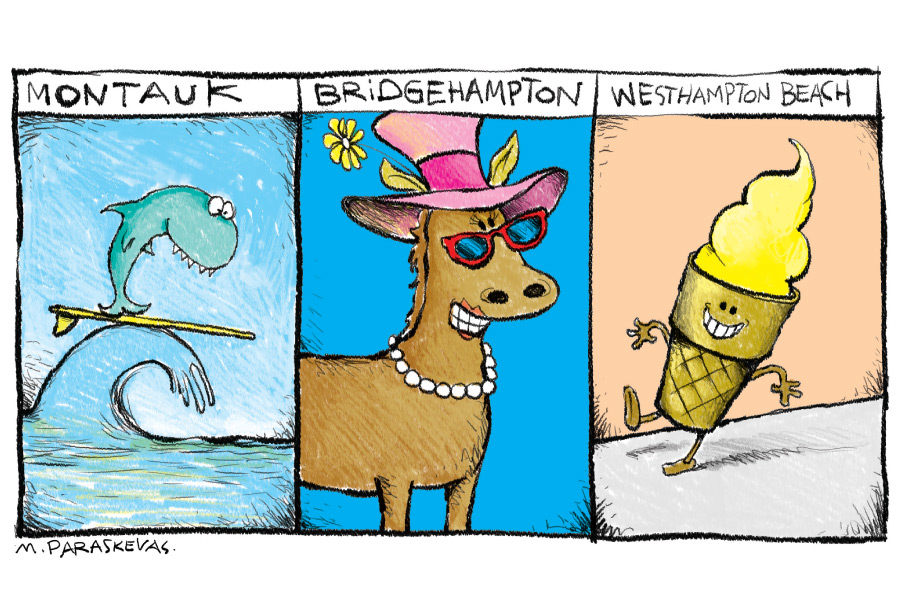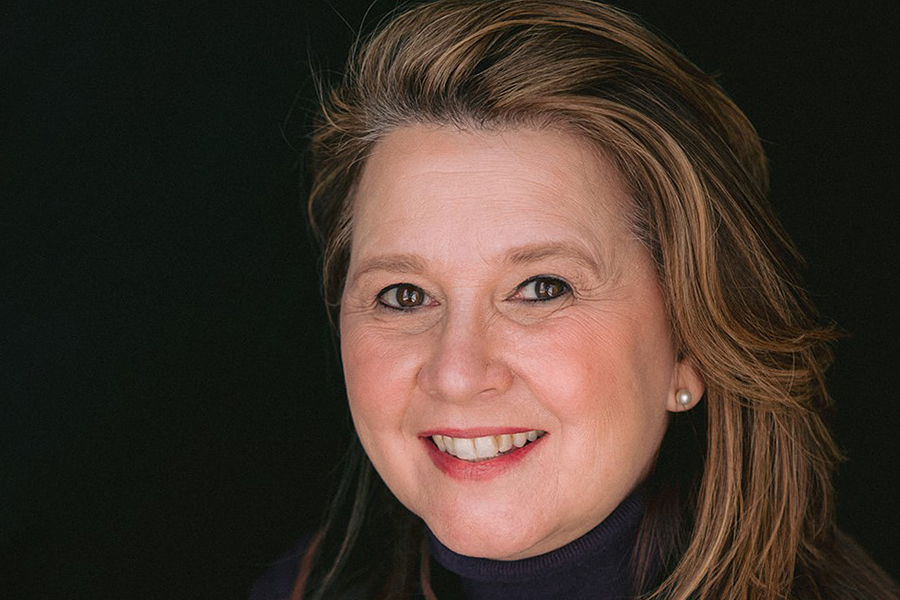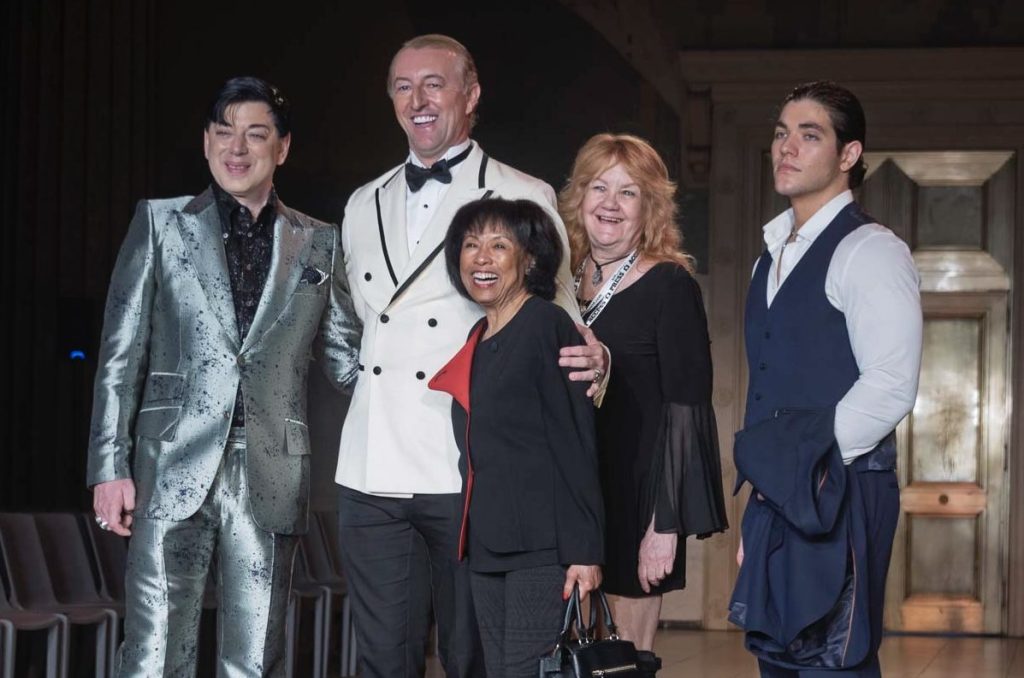Talking to Me: What the Hamptons Villages and Hamlets Say

There was an article in The New York Times recently about what you should do if you are thinking of moving to a new town. Most people just consider the size of the house and its price, how far away the school is and whether or not it is an easy commute to the city. The author of the story says you should do a lot more. She lists 43 things, which include parking outside the school when the mothers arrive with their kids to see who goes there and how they dress, sitting in a coffee shop to listen to what people talk about, reading the little items in the local newspaper and, well, 39 other things, including what kind of cars people drive.
I thought, having lived here in the Hamptons for more than half a century, I could save you the trouble about this place. The little villages in the Hamptons each, separately, talk to me. I visit them frequently and sense their personalities. Here’s what I get, for what it’s worth. I can save you the 43 things. But then, you’ll probably get a whole lot of different answers from others who are here.
MONTAUK
I’m Montauk, come to me. In the summertime, I am sea breezes downtown, the salt air mixing with the mist from the surf coming in just over the dunes, views of water everywhere, to the lake, the pond, the bay, the ocean, the sound, sometimes two or three bodies of water at a time all from one spot. I’m a town filled with motels and fishing stations, restaurants and miniature golf and baseball and paddleboarding and sailing, and I’m a town of young people, mostly surfers, mostly Hamptons types getting away from the Hamptons to windsurf, sunbathe, look for romance, stay up late. I’m delighted to have these people. They are upscale, or pretend upscale. They are well-behaved or pretend well-behaved. They bring excitement and commerce. I’ve got tennis and golfers and many fishermen as well—surfcasters, sport fishermen, commercial fishermen. I hold more world’s biggest fishing records than any other town in the world. So that’s our summer. We’re a vacation from the Hamptons, nothing like the Hamptons, a town that sprang up in the 1950s for no reason other than sun and fun. In the off-season, we enjoy winds and solitude and salt sea air. We’ve got a good school, a library, a big community center and we get by, waiting for our season.
AMAGANSETT
I don’t quite know what to be. I’m a Hampton, founded in 1680, but I am a town with both large and modest summer homes leading down to the beach. I’ve also got a single street of downtown, which is also the street where you drive through to get someplace that’s not this town. I’ve got churches, local stores, summer stores, a big square but not a square from colonial times—and no windmill. What the heck.
But I’ve also got a legendary music venue—The Stephen Talkhouse—a great farmers market, several museums and two gas stations. I can’t quite figure it out myself, but there’s a lot of nice people who live here.
EAST HAMPTON
Everybody asks me—where did I go? I used to be a town filled with artists and writers and wealthy people and merchants and baymen all mixed up into the most beautiful downtown in the Hamptons.
You could get anything in our mom-and-pop downtown. We had a stationery store, a couple of liquor stores, a five and ten, a couple of shops for the tourists, a few celebrities hidden away, and then everything just exploded. The celebs and fashion models and paparazzi are now everywhere. The big news this year is that an oceanfront house recently sold for $147 million—breaking the record for a previous oceanfront house that sold for $104 million—which is a record not just for East Hampton or the Hamptons but the whole country. It says a lot about what we stand for. Downtown is now filled with upscale jewelry and clothing stores, some of which close for the winter.
But we are still as stunningly beautiful as ever. We have four windmills, two town greens, a town pond, a historic library, the grandest main street anywhere, a theater and art gallery of the highest quality and probably the most beautiful ocean beach in the Hamptons, where the renting of cabanas sells out the day they are offered.
I lost a lot of old friends when the real estate prices went through the roof, but now I’ve got new ones. Truth is, though, that you either can afford East Hampton or you go elsewhere.
SAG HARBOR
I’m Sag Harbor and you’re really gonna like me now. It’s true I’m not a 1600s town. I’m an early 1700s town, a whaling town, and I’ve got narrow streets, a whaling museum—where else is there a whaling museum? And I’ve had my ups and downs. In the whaling era I prospered, later I went to ruin, got fixed up and went to ruin again. But since about 1970 I’ve been restored and I’m filled with happy people who live here and are very proud of me.
No chain shops for me. I celebrate the local. I’m full of local people and interesting ideas and all sorts of unexpected things. A wharf where a brief revolutionary war battle was fought. A religious retreat. Sailing regattas. A two-day reading of Moby Dick. Coffee shops. Art galleries. Seven churches and a turn-of-the-century (finished in 1898) synagogue. A polar bear plunge. We have an army—an army that finds chain stores that want to open here that we have to chase away. An army that cares for beaches and a big park.
Want to take a trip through the 1940s? Come to Sag Harbor. It’s just like it always was, except on weekends when the tourists come to see it all in action.
BRIDGEHAMPTON
I was, for many years, a farm town. You came here to buy and sell farm equipment, bag potatoes, hang out at the Candy Kitchen, have a tractor fixed. Today most of the potato farms have been developed as McMansions. I’m a town of excellent restaurants, antique and furniture stores, old inns and shops. But I have excellent institutions. I have a museum, a community house, half a dozen churches, a firehouse, a ball field, a beautiful windmill tucked away and a big monument at the five corners in the center of town commemorating our veterans who lost their lives defending the country. Out of town, my potato farms have become private schools, wineries and horse farms. Who knew this would happen?
WATER MILL
I’m the cute little village halfway between Bridgehampton and Southampton. I’ve got one windmill, one water mill, one post office and a very quiet private estate area. There’s a world-famous art gallery now on more than 10 acres, but you won’t find a movie theater here or much of anything else. There’s an unused church for rent for meetings. There’s no school, but I have a magnificent triangular green with perhaps the most beautiful windmill in the Hamptons.
SOUTHAMPTON
Not long ago, I was just one of the string of old Hamptons towns along the highway, the largest of them, the first to be settled and the first to have a wealthy summer enclave, but in many respects not much different from the others. But now I’ve grown. I’m a town of broad shoulders, of grand town halls, magnificent libraries, a hospital grown large, a college campus run by a university, a cultural center and historic museums, and I still have the grand wealthy summer enclave and a whole lot more. I’m truly now the capital of the Hamptons and I’ve been in recent years the recipient of a series of powerful and far-seeing mayors who have helped me grow. You’ll love it here.
HAMPTON BAYS
I have marinas and fishing docks and commercial fishing boats but am otherwise a new town, built as I am now not long ago, having grown into a modern Long Island town with shopping centers and old fishing and hardware stores and a great local population that is happy to be living wedged here among the “Fabulous Hamptons.” I wasn’t even originally a Hampton. My original town name was Good Ground. But they changed it at some point, perhaps at Ellis Island when I arrived in the New World.
QUOGUE
I am a tiny, very beautiful old 17th century village of peace and quiet with a narrow one-block-long main street tucked away on a side street. I am a classic Hampton, but off the beaten path. A century ago, I was an exclusive enclave of white Anglo Saxon summer people who didn’t want outsiders. Today I am an exclusive enclave of whoever-can-afford-these-homes-who-don’t-want-outsiders. But sometimes I wonder. This past year, a house on Main Street became the Quogue Club, open only to residents, but so many residents joined that they had to close it because it was too crowded with the residents. We love one another. But it would be nice once in a while to break out and go to, for example, Hampton Bays or Westhampton Beach, but they just seem so far away.
WESTHAMPTON BEACH
I do have a little secret. My cute little curving main street with the 60 or 70 shops on both sides was not built as a colonial New England village in colonial times, as appears to be the case, but around 1890, after the railroad from New York City came to town. It is a reproduction, but it is a wonderful place to shop nevertheless, and the rest of town is as charming as Main Street, with a lot of wealthy mansions between downtown and the bay. My old movie theater on Main Street was transformed into a grand performing arts center that is a cultural center for the entire region. And I have churches and synagogues and schools and libraries and parks. And of course I have Dune Road and the beach where former night spots are being transformed into public access facilities for visitors. I’m the closest “Hampton” to New York, just an hour and a half away by Jitney or rail. And I am probably the friendliest of all of the Hamptons. Come stay here with me.









